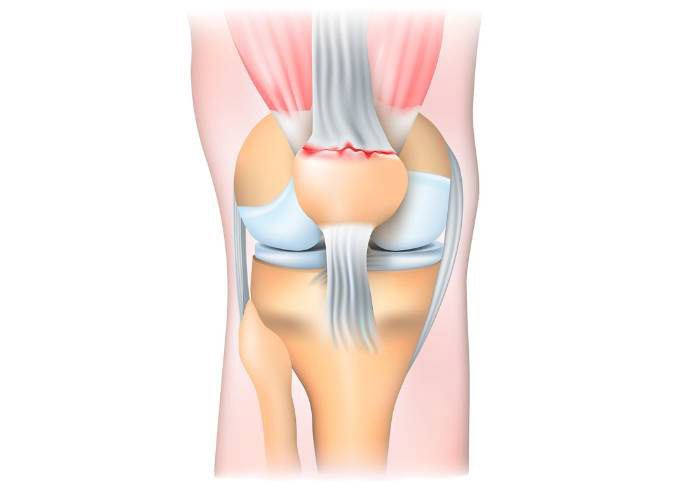Quadriceps Tear or Rupture Specialist
Do you participate in sports or activities that involve frequent running and jumping? If so, you may be at risk of injuring or rupturing your quadriceps tendon. The quadriceps tendons in the front of your leg, play an important part in balance, strength and even walking. Injury to this set of muscles and tendons should be treated by an expert in quadriceps injuries. Doctor Prem Ramkumar, quadriceps injury specialist has the experience and expertise in performing treating the many different types of quadriceps injuries. He is located in Long Beach and serves patients in Los Angeles, Orange County, and surrounding Southern California areas. Contact Dr. Ramkumar’s office today!

What is a quadriceps tear or rupture?
The quadriceps tendon attaches the quadriceps femoris muscle group to the top of the patella (kneecap). This muscle group, more commonly known as the “quads”, contains four separate muscles found along the anterior (front) thigh. These four muscles begin at the hip and join together to form the quadriceps tendon. This tendon, with the help of the quadriceps muscle and patellar tendon, is able to play an important role in the mechanics of straightening and bending the leg. When a significant amount of stress is placed on the knee with deep bending, the quadriceps tendon can become partially or completely torn from its attachment site on the patella resulting in weakness straightening the knee and pain bending the knee. Middle-aged and older individuals who participate in jumping and running sports are most susceptible to this rare and often serious injury. However, other risk factors (including genetics) can increase one’s risk of developing a quadriceps tear or rupture. These factors include, but are not limited to, the use of steroids, certain antibiotics, and some underlying health conditions such as diabetes, rheumatoid arthritis, and chronic inflammation of the quadriceps tendon. Dr. Prem N. Ramkumar, orthopedic quadriceps tear/rupture specialist serving patients in Long Beach, Los Angeles, Orange County, and Southern California surrounding areas, has the knowledge and understanding, as well as substantial experience in treating patients who have experienced a quadriceps tear or rupture.

What are the symptoms of a quadriceps tendon tear or rupture?
Swelling and pain above the knee immediately following an injury is commonly described with a quadriceps tendon tear or rupture. A “popping” or “tearing” sensation has also been reported by some individuals at the time of injury. You may also notice that your kneecap is lower than the other side. Some other common complaints of a quadriceps tendon tear or rupture can include:
- Knee cramping and tenderness
- Inability to straighten the leg
- Bruising above the knee
- A sensation of the knee “giving way”
- Lower patellar height
How is a quadriceps tear or rupture diagnosed?
A thorough medical history is gathered followed by a comprehensive physical examination. The integrity of the quadriceps tendon is then evaluated if Dr. Ramkumar suspects a quadriceps tear or rupture. X-rays can help diagnose a complete quadriceps tendon tear by the height of the patella. Diagnostic imaging studies, such as magnetic resonance imaging (MRI), are key in identifying the extent of a quadriceps tear while also discerning if other knee joint structures sustained damage.
What is the treatment for a quadriceps tendon tear?
The treatment hinges on your ability to independently (without using your arms to help) perform a straight leg raise (keeping your leg straight while elevating). If you can, you have likely avoided surgery. If you cannot, you would likely benefit from surgical repair or reconstruction.
Non-surgical treatment:
A minor quadriceps tendon tear typically responds well to conservative treatment measures alone. Joint immobilization with gradual range of motion is crucial for stabilizing and protecting the knee joint as it attempts to heal on its own. A combination of rest, ice, elevation, and non-steroidal anti-inflammatory medications (NSAIDs) can help manage any pain and inflammation associated with a quadriceps tendon tear. Dr. Ramkumar will recommend a physical rehabilitation program, when appropriate, to further strengthen and restore the affected lower extremity’s range of motion.
Surgical treatment:
Surgical intervention to repair the quadriceps tendon is often necessary for complete quadriceps tendon tears or when individuals do not benefit from conservative management. Dr. Ramkumar typically performs this repair to reattach the remaining healthy quadriceps tendon by passing sutures through tunnels created in the patella. Occasionally, a tendon graft may be implemented to reconstruct or lengthen the quadriceps tendon in the event of tendon retraction. This repair must be protected at all times by using a brace to prevent premature bending to give the tendon time to heal back to the bone.

